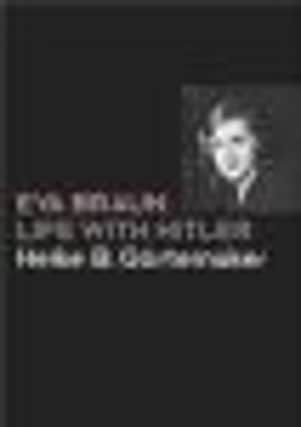Book review: Eva Braun: Life with Hitler by Heike B.Görtemaker


Only days after a hurried wedding ceremony in the Führer’s bunker in Berlin, Braun swallowed a cyanide capsule while the devil she had fallen in love with in a photographic studio 14 years earlier died alongside her.
So who was Eva Braun? Was she just an apolitical and archetypal dumb blonde happy to be an accessory to a man 23 years her senior, or has she been seriously underestimated by a whole raft of historians?
Advertisement
Hide AdAdvertisement
Hide AdGerman historian Heike Görtemaker’s fascinating book, translated by Damion Searls, is the first to take Braun’s role in the Nazi hierarchy seriously.
Braun’s life tells us a huge amount about a catastrophic era in German history, both in her role as Hitler’s companion and as the hostess at Nazi social events at the Berghof, Hitler’s home in the Bavarian Alps.
Görtemaker allows Braun to step out as much as possible from the shadows and fully inhabit her strange role at the heart of a terrible regime.
Braun’s story gives a new perspective on a ruling party that prided itself on its harsh, coherent ideology, but which was, in practice, a chaos of competing individuals fighting for space around Hitler.
Advertisement
Hide AdAdvertisement
Hide AdBraun had a special place in Hitler’s inner sanctum. She was both marginal and exceptional, a more powerful figure than the Third Reich’s First Ladies Magda Goebbels and Margarete Speer, but almost never chose to use that power.
The daughter of a lower middle class Munich schoolteacher, Braun, born in 1912, was obsessed with sport, fashion, photography and films.
She lived with Hitler as his secret mistress and they had no children. And so, at the heart of the Nazi regime there was an odd paradox: the leader of a ferocious dictatorship, himself obsessed with imposing an idea of the ‘German family’ on an entire nation, chose to spend much of his adult life with a woman in a manner that was both bohemian and counter-ideological.
Although Braun displayed no overt interest in politics, Görtemaker reveals her as a Nazi sympathiser and a capricious, uncompromising champion of absolute loyalty to Hitler. She was never a member of the dictator’s National Socialist party but her life was shaped by his warped worldview. On two occasions, when she felt Hitler was ignoring her, she consolidated her position at his side by botched suicide attempts.
Advertisement
Hide AdAdvertisement
Hide AdHitler, in turn, recognised in her someone from a similar background, outside traditional elite society, who was more than ready to be his fanatical supporter and live life on his terms.
As Hitler had declared himself ‘married to Germany,’ it was essential that the public did not know of Braun’s existence and she was only ever once photographed publicly with him – concealed in the entourage behind the Führer at the Winter Olympics in 1936.
Their life as a ‘couple’ was mainly spent at the Berghof where Braun read, partied and enjoyed the outdoors while the vegetarian Hitler watched films, lazed in bed until early afternoon, took strolls in a fenced-off area and ‘popped’ an endless supply of pills.
Görtemaker’s compelling account of Braun’s life tells us as much about her monstrous lover as it does of his soulless mistress. When she killed herself just hours after their marriage, she left this world as a misguided, but willing, victim.
(Allen Lane, hardback, £25)